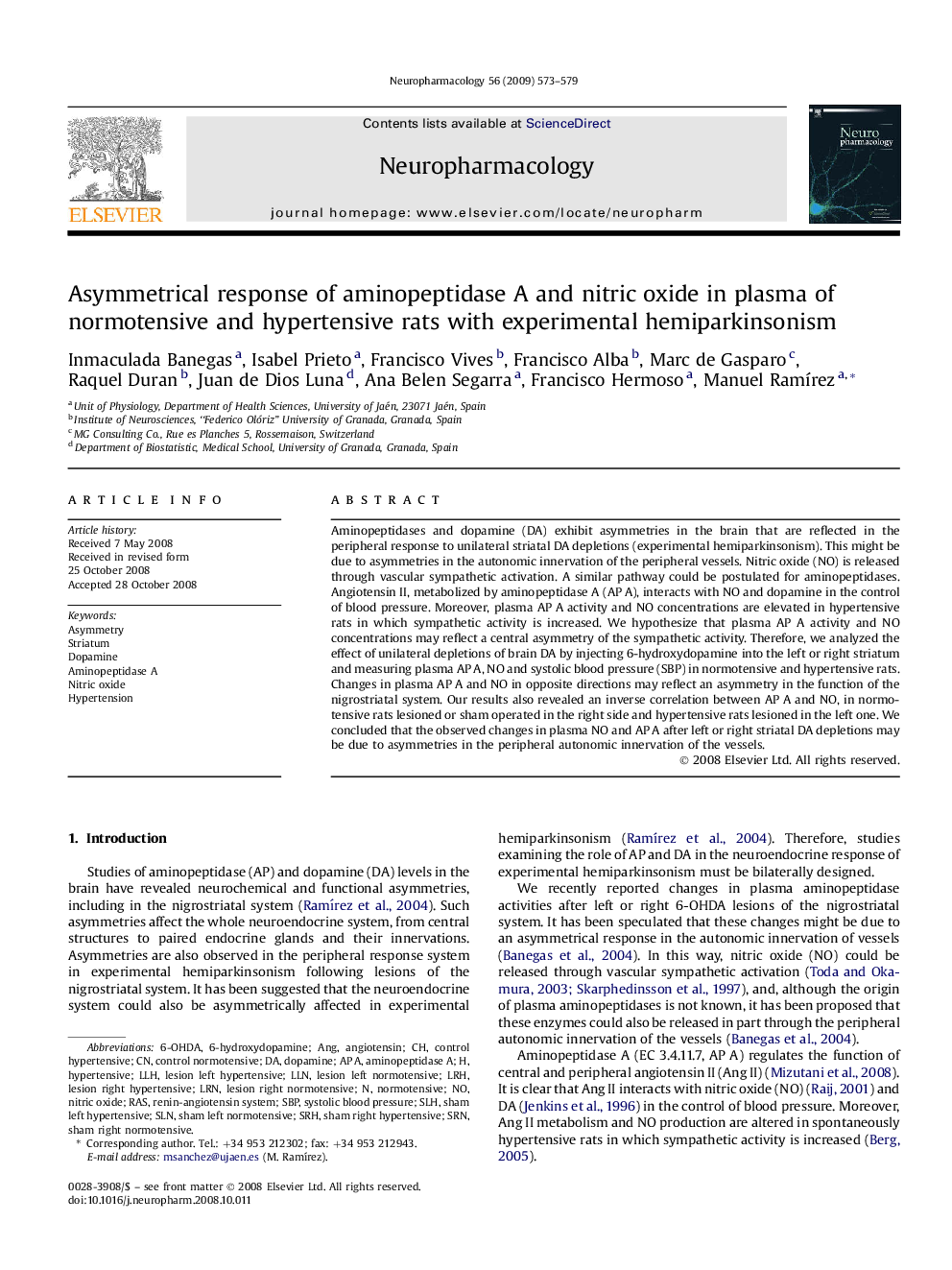| Article ID | Journal | Published Year | Pages | File Type |
|---|---|---|---|---|
| 2494395 | Neuropharmacology | 2009 | 7 Pages |
Aminopeptidases and dopamine (DA) exhibit asymmetries in the brain that are reflected in the peripheral response to unilateral striatal DA depletions (experimental hemiparkinsonism). This might be due to asymmetries in the autonomic innervation of the peripheral vessels. Nitric oxide (NO) is released through vascular sympathetic activation. A similar pathway could be postulated for aminopeptidases. Angiotensin II, metabolized by aminopeptidase A (AP A), interacts with NO and dopamine in the control of blood pressure. Moreover, plasma AP A activity and NO concentrations are elevated in hypertensive rats in which sympathetic activity is increased. We hypothesize that plasma AP A activity and NO concentrations may reflect a central asymmetry of the sympathetic activity. Therefore, we analyzed the effect of unilateral depletions of brain DA by injecting 6-hydroxydopamine into the left or right striatum and measuring plasma AP A, NO and systolic blood pressure (SBP) in normotensive and hypertensive rats. Changes in plasma AP A and NO in opposite directions may reflect an asymmetry in the function of the nigrostriatal system. Our results also revealed an inverse correlation between AP A and NO, in normotensive rats lesioned or sham operated in the right side and hypertensive rats lesioned in the left one. We concluded that the observed changes in plasma NO and AP A after left or right striatal DA depletions may be due to asymmetries in the peripheral autonomic innervation of the vessels.
